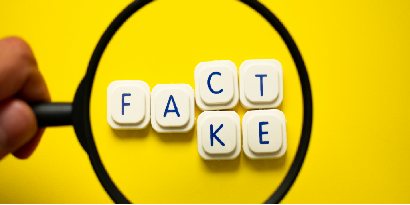A seamless blend of collaboration and creativity is key to a thriving, innovative workplace. In today’s interconnected world, achieving a collaborative and creative workflow is no longer an aspiration but a necessity. When teams harmonize their efforts, drawing from diverse perspectives and fostering open communication and innovation, they unlock a reservoir of potential. This potential fuels groundbreaking ideas and solutions that can set a business apart from its competitors. In this article, we explore ten transformative ways to cultivate a more collaborative and creative workflow, empowering teams to reach new heights of productivity and innovation.
1. Foster open communication
Harnessing open communication between you and other team members is fundamental to promoting a collaborative and creative workflow. By opening up channels for communication, you invite regular and constructive feedback on your projects. With team members openly sharing input, suggestions, and improvements, you enhance your creative process.
In addition, open communication promotes trust-building and psychological safety. When team members feel safe to express their opinions and ideas, you foster trust within your team. By harnessing psychological safety within your team, individuals feel free to voice out-of-the-box ideas.
2. Define your goals
When attempting to harness a creative and collaborative workflow, you first need to define your goals and objectives. By defining your goals, you ensure each member of your team understands the direction, purpose, and desired outcome of your project. Goals also assist in setting priorities, where to delegate your efforts, and how to manage your assets based on what’s most important.
Well-defined goals also encourage creative thinking and innovative approaches to achieving them. Stimulating innovation and creativity among your team with your goals in mind motivates employees to brainstorm and explore new ideas. Goals present challenges and obstacles that require creative problem-solving, and encouraging collaboration to overcome these goals can lead to innovative strategies.
3. Seek diverse perspectives
Seeking a wide range of perspectives is pivotal to establishing a collaborative and creative workflow. Each member of your team brings unique perspectives, experiences, and expertise to the table. Seeking these perspectives ensures a rich pool of ideas, enhancing overall creativity within your team. Encouraging your team to share their perspectives enables the cross-pollination of ideas.
Promoting open dialogue between each member of your team encourages debate and dialogue. Encouraging healthy debates and constructive dialogue allows your team to explore each viewpoint, leading to well-rounded and innovative solutions through collaboration. Exposure to these different perspectives encourages employees to think outside their typical frameworks and comfort zones.
4. Be flexible
The ability to adapt to change is crucial if you want to harness a collaborative and creative workflow. Flexibility enables your team to quickly adapt to changes in projects and initiatives. A team with strong agility is vital to effectively responding to evolving project needs and fostering innovation in response to new challenges.
Flexibility also means being open to new and different ideas. A flexible work environment encourages your team to be receptive to innovative ideas and integrate them into your workflow. By encouraging a culture of experimentation, your team will feel empowered to try new methods, technologies, and processes.
5. Promote a collaborative work environment
Promoting collaboration among your team directly benefits your creative workflow. Collaboration requires active involvement in discussions and decision-making processes. Engaged employees are more likely to contribute their creative ideas, share their expertise, and work collectively to achieve team goals.
6. Plan brainstorming sessions
Dedicating time for your team to brainstorm is a key strategy for promoting a collaborative and creative workflow within your company. With a structured team brainstorming meeting, you allow and encourage employees to focus on generating new ideas. This ensures that each employee has the opportunity to participate and share their ideas.
When organizing a brainstorming session, provide a clear area of focus. Additionally. Consider establishing ground rules for the sessions, such as encouraging a judgment-free atmosphere and avoiding criticism in the ideation process.
7. Be open to developing your skills
Developing new skills and improving existing ones is fundamental to collaboration and creativity within your team. Demonstrating a willingness to learn, whether it be by employing new technology such as AP management software or mandating employee training courses, encourages the rest of your team to do the same. By creating a culture of learning, you promote continued improvement and skill enhancement, improving creativity and collaboration.
Team members who are open to skill development open up opportunities for peer-to-peer mentorship. It also encourages collaboration between your different company departments. Seeking opportunities to develop new skills involves working with others with complementary expertise, leading to cross-functional collaboration and innovative problem-solving.
8. Be willing to learn from mistakes
The willingness to fail and learn from your mistakes is a crucial aspect of collaboration and creativity within a team. Embracing mistakes as opportunities for growth helps develop a growth mindset within your team. When challenges and setbacks are viewed as chances to learn, adapt, and improve, you promote a positive and creative workplace culture.
Additionally, when team members know that mistakes are viewed as constructive learning experiences, they’re more likely to take calculated risks and experiment with new ideas, fostering creativity by allowing employees to explore innovative solutions without fear of failure or losing their job.
9. Set aside time for individual creativity
Blocking out time on your work calendar to support your creativity within your work allows time to reflect on projects independently. Introspection fosters idea generation and encourages teams to come up with innovative solutions and theories. Additionally, every individual on your team has a distinct way of approaching creativity. Some may thrive in group settings, while others generate their best ideas in solitude. By providing time for each working style, you foster an inclusive and creative team dynamic.
10. Check-in with your team
Team and individual check-ins are fundamental practices that can significantly contribute to collaboration and creativity within your team. Conducting regular check-ins, both individually and as a group, ensures all team members are aligned with project goals, objectives, and expectations. Alignment helps provide clarity on individual and collective roles, fostering a cohesive and creative workflow.
The keys to success
A harmonious and creative workflow doesn’t manifest by chance; it’s a deliberate employment of strategies and practices that prioritize collaboration and innovation. By embracing open communication, fostering a culture of continuous learning, and providing space for both individual creativity and collective brainstorming, teams can harness the collective genius within their ranks. As we’ve explored ten impactful ways to enhance collaboration and creativity, it’s evident that the journey to a more innovative and collaborative workspace is within reach. By implementing these strategies, your team can harness a future where creativity flourishes and collaboration propels you to remarkable success.




